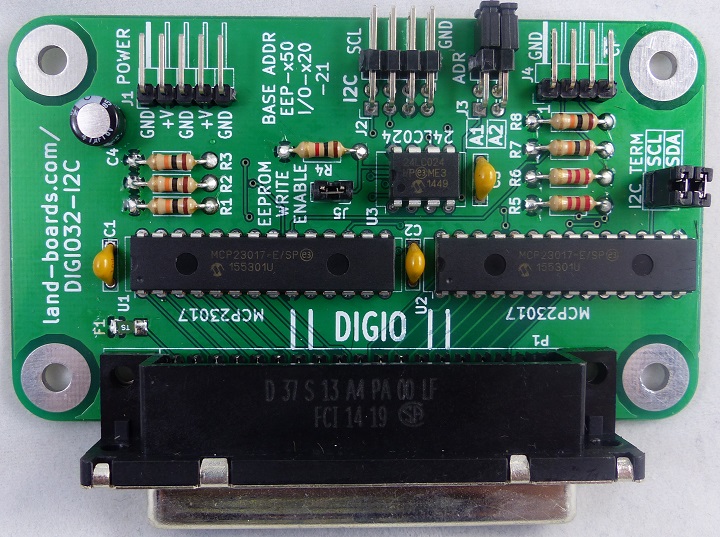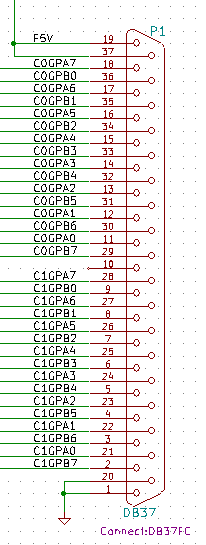Difference between revisions of "DIGIO32-I2C"
Jump to navigation
Jump to search
Blwikiadmin (talk | contribs) |
Blwikiadmin (talk | contribs) |
||
| Line 45: | Line 45: | ||
////////////////////////////////////////////////////////////////////////////////////// | ////////////////////////////////////////////////////////////////////////////////////// | ||
// uint8_t testDigio32Card() - Test the DIGIO32 card. | // uint8_t testDigio32Card() - Test the DIGIO32 card. | ||
| − | // Cable from UUT connector to the DIGIO32 card in the Test Station. | + | // Cable from UUT DB-37 connector to the DIGIO32 card DB-37 in the Test Station. |
// The Test Station and the UUT both are DIGIO32 cards. | // The Test Station and the UUT both are DIGIO32 cards. | ||
// The DIGIO32 internal to the Test Station is set to all inputs with pull-ups. | // The DIGIO32 internal to the Test Station is set to all inputs with pull-ups. | ||
Revision as of 23:53, 4 March 2022
Features
- 32-bit Digital I/O
- Two MCP23017 16-bit I2C I/O Expanders
- EEPROM for board ID and application specific information
- Write Enable jumper protects EEPROM against accidental damage
- I/O Connector is inexpensive/standard DB-37
- I2C Interface
- Daisy-chain I2C connector
- I2C Termination jumpers for end of I2C chain
- I2C Address select jumper (2 addresses - can support up to 4 cards)
- Power Options
- Supports 3.3V or 5V signal levels
- Fuse protected power output on DB-37
- Power connector (not required for minimal loads
- ODAS form factor (width is 95 mm)
- 6-32 Mounting holes
Connectors
DB-37 Pinout
Schematic
Drivers
- GitHub repo for the DigIO32-I2C Card Arduino Driver
- GitHub repo for the DigIO32-I2C Card Arduino examples
Testing
////////////////////////////////////////////////////////////////////////////////////// // uint8_t testDigio32Card() - Test the DIGIO32 card. // Cable from UUT DB-37 connector to the DIGIO32 card DB-37 in the Test Station. // The Test Station and the UUT both are DIGIO32 cards. // The DIGIO32 internal to the Test Station is set to all inputs with pull-ups. // The DIGIO32 that is the UUT is set up to all outputs. //////////////////////////////////////////////////////////////////////////////////////


